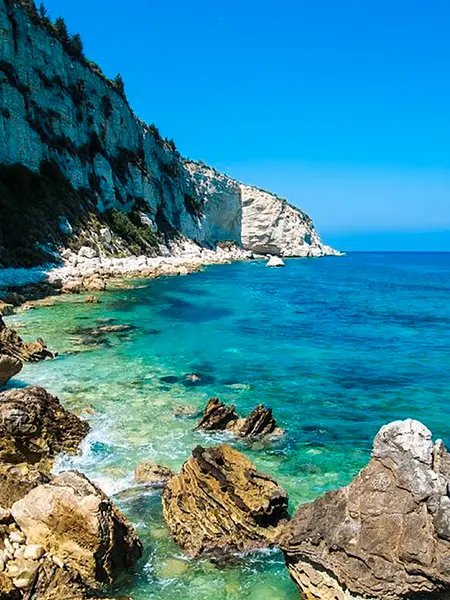Syria tourist attractions-The Coastal Region
The Coastal Region
The Syrian coast is made up of long stretches of beach and green mountains. These mountains are mostly covered with pine and oak trees, and their slopes touch the coast. This landscape is repeated from Ras al-Basit in the north to Tartous in the south. In the mountains there are scattered towns and cities with clear mineral water springs and beautiful lakes and forests.
Latakia: is Syria's main seaport in the Mediterranean. It retained its importance since ancient times. Latakia was one of the five cities built by Saluqos Nicator in the 2nd century BC. He named her after his mother, Laudetia. Not many ancient remains have survived in Latakia, but there are four columns and a Roman arch from the time of Septimus Severus.
Ugarit: the kingdom that had a golden past in administration, education, diplomacy, law, religion and economy between the 16th and 13th centuries BC. It is the kingdom that gave humanity the first alphabet. This alphabet is still preserved on a clay tablet in the National Museum in Damascus. Documents, statues and jewelry from the Kingdom of Ugarit are also exhibited in the museums of Latakia, Aleppo and Tartus.
Salah Ed Deen Citadel: Named after Salah Ed Deen, to commemorate the liberation of the citadel in 1188. Although the importance of the position had been exploited before the Crusades, this castle was described as the most impregnable Crusader fortress.
Tartous: The second most important Syrian seaport in the Mediterranean. The Phoenicians called it Antaradus and the Byzantines Tortusa. A gem of Romanesque art is the Tartous Cathedral, which is now a museum containing relics from various Syrian civilizations.
Arwad: It is the only island in Syria and is located 3 km from Tartous. It was an independent kingdom called Aradus in the days of the Canaanites. It was often mentioned in inscriptions due to its importance in trade and navigation.
Almarqeb Citadel: This citadel is just 6 km southeast of Banyas and is located 500 m above sea level. It is enormous: there are no less than fourteen square and round towers that protrude from the curtain wall that surrounds the top of the hill to form a triangular bastion.





